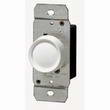More about How to Wire Dimmer Switches |
Replacing a Switch with a Dimmer Switch
Hi i'm trying to wire in a dimmer switch. Recent Questions and Posts
How do I Replace a Switch with a Dimmer Switch for my Light Fixtures? Dimmer Switch Wiring Connections for Light Fixtures. What is causing my light fixtures to be dim? How to Identify and Fix the Cause of Dim Lights, which may be a Indication of an Electrical Problem, How to Check Electric Circuit Wiring causing Dim Lights. How are 3-way switches wired? The Key to Wiring 3 Way Switch and 3 Way Dimmer Switch Wiring, Key Wiring Configurations for 3 way Switch Wiring. Wiring a Dimmer Switch Wiring for Light Fixtures: Basic Wiring for Light Switches and Dimmers, Identify Switch Box Wires. How to Wire 3Way Dimmer Switches: Common 3Way Dimmer Switch Wire Connections and Light Level Adjustments, Wiring Two 3Way Dimmer Switches. I have a 6 year old who is terrified to walk down the dark hallway at night to get to the bathroom. I wanted to switch out the 3-way switch for a 3-way dimmer switch so I can leave the light on but dimmed so the whole hallway is illuminated. I want to install a dimmer switch in my kitchen. My Electrical box has a switch with one black wire one red wire going to same side of switch. I just changed a light switch and lost power to my outlets, what did I do wrong? How to Check Light Switch Wiring Connections, Common Light Switch Wiring Problem and Solution. How to Wire a Dimmer Switch: Dimmer Switch Wiring, Dimmer switch wiring diagrams, Wiring a 3-way dimmer switch. How to Wire Dimmer Switches and 3Way Switches: Electrical Tips about Wiring 3Way Dimmers and Switches. |















